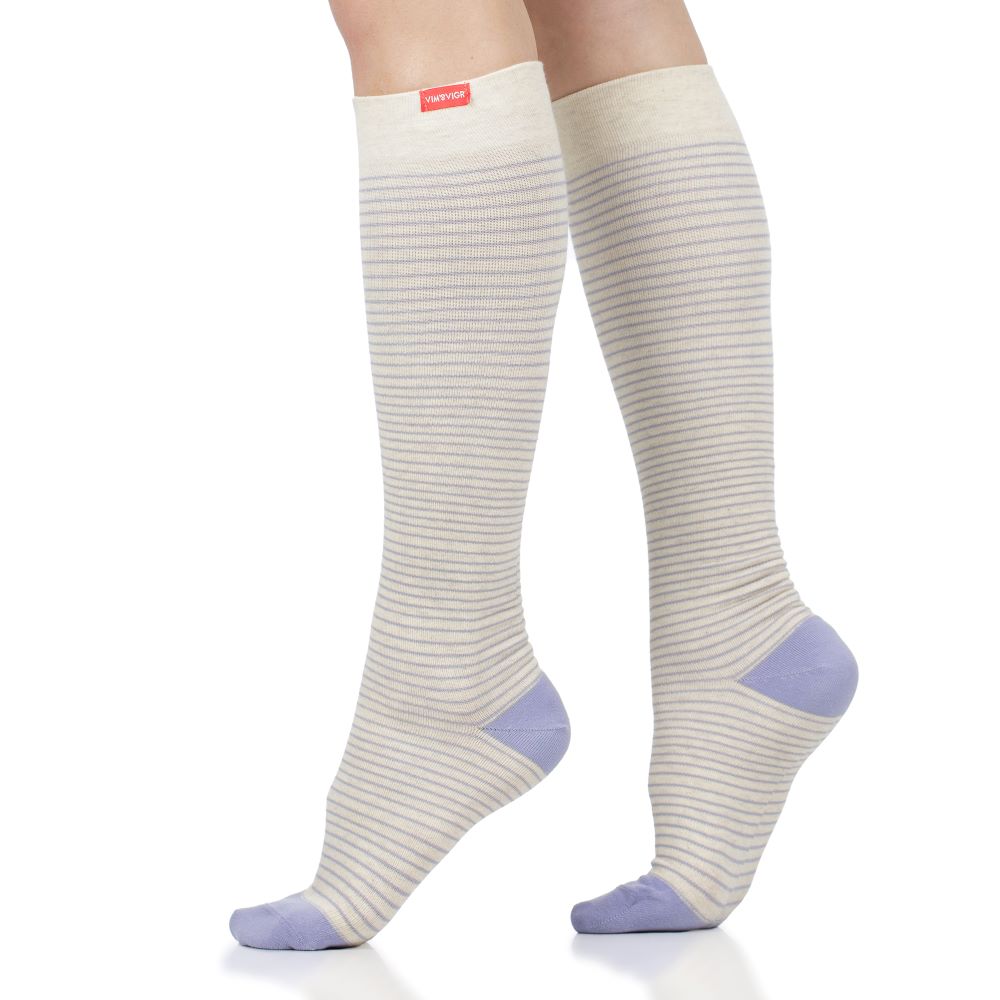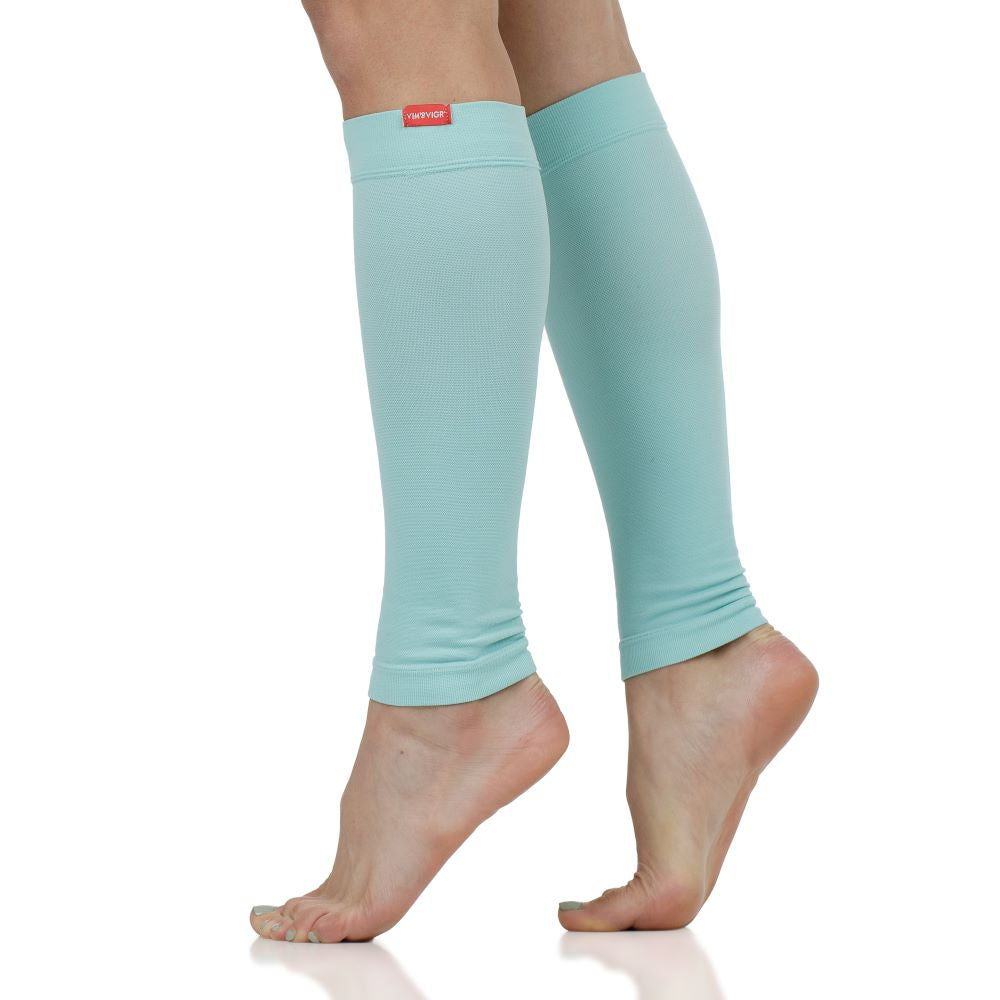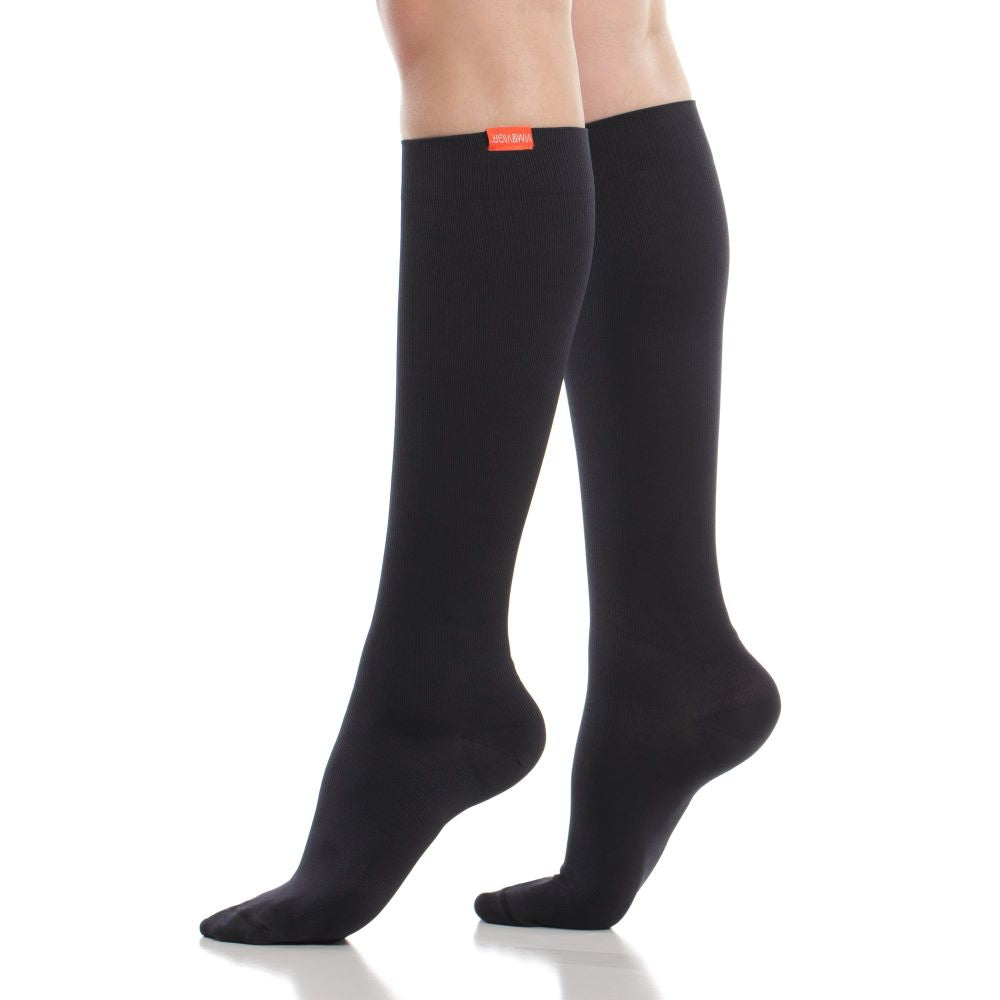Exploring Compression Socks for Cellulitis Relief & Prevention
Cellulitis is a painful condition where the skin in the lower legs (most often) becomes infected with bacteria. It can lead to tenderness, pain, swelling, and even open sores on the limbs. It is also strongly associated with edema and lymphedema.
To lower the risk of cellulitis, reducing leg swelling and preventing conditions like edema and lymphedema can significantly improve your health. You can also wear compression socks during recovery from cellulitis to reduce the risk of subsequent infections (which cellulitis patients often experience).
In this article, we will cover the benefits of compression therapy in preventing and managing cellulitis and associated conditions including blood clots, edema, etc. Read on to learn how to pick the best pair for you and how to use compression effectively when you suffer from this type of infection.
Will Compression Socks Help with Cellulitis?
Cellulitis is a bacterial infection that often occurs in the lower limbs and is frequently connected to edema (swelling that stretches the skin and makes it easier for bacteria to penetrate it). Wearing compression socks can prevent swelling and lymphedema, reducing the risk of cellulitis.
Moreover, as compression socks work to massage the legs and stimulate blood and fluid movement throughout the body, they help bring down swelling and are therefore often prescribed to cellulitis patients. The gentle pressure applied by the socks, along with the boost in blood flow, helps the body fight localized infection and gives bacteria less of a favorable breeding ground (they prefer the swollen tissue caused by lymphedema).
This is why studies show that using lymphedema compression stockings and socks can reduce the recurrence of cellulitis and minimize the risk of it occurring in the first place.
The Benefits of Compression Socks for Cellulitis Management and Prevention
On the one hand, compression socks help manage edema and cellulitis. On the other hand, they are great at reducing the risk of a new infection or lowering your chances of having cellulitis in the first place.
Edema Management and Lymphatic Drainage
Edema and lymphedema are instances of swelling - often in the lower legs - caused by blood or lymphatic fluid pooling and not traveling effectively through the body. Compression socks boost blood flow and encourage lymphatic drainage by applying gentle pressure to the lower legs, stimulating the veins in pushing blood back up to the heart, and preventing blockages in the extremities.
Various studies have found that wearing compression socks reduces the risk of cellulitis caused by edema. Instead of focusing only on the specific problem of cellulitis, medical practitioners are encouraged to look into underlying causes that can be treated or prevented - in this case, the swelling of legs and feet.
Alleviate Pain and Discomfort
Cellulitis is often accompanied by pain and tenderness in the swollen and infected areas. While you should not wear compression socks directly on open sores or irritated skin, wearing them when the skin only appears irritated (but feels ok to touch and without open wounds) can make a big difference in the pain and heavy feeling in the legs.
Compression socks boost lymphatic drainage and peripheral circulation, reducing inflammation under the skin and bringing down the swelling that causes pain and tenderness. Another benefit of wearing them is that they support the legs - particularly the muscles and joints - as you move around when you suffer from cellulitis. This is reassuring and supportive, keeping you active and possibly reducing the risk of other complications.
Reduced Risk of Secondary Infections
Researchers have found that, just as lymphedema stretches the skin and creates a risk of developing this condition, having cellulitis can also lead to secondary lymphedema, creating an opportunity for new infections. Moreover, a significant number of people suffer from recurrent cellulitis (8 to 20 percent of patients are affected annually according to some sources).
Wearing compression socks after you’ve been treated for cellulitis therefore plays an important preventative role. They reduce the risk of swelling and edema, while also stimulating blood flow which nourishes and repairs the tissues and muscles. With a lower risk of edema, there is less likelihood of a new bout of cellulitis.
How to Use Compression Socks for Cellulitis
Cellulitis patients will first need to undergo an antibiotic treatment to remove the bacterial infection. Once this is done, wearing compression socks will reduce the likelihood of another infection caused by edema. Other preventive measures, particularly against swelling of the feet and legs, will boost your chances of avoiding cellulitis in the future.
Frequency and Duration of Wear
Compression socks can be worn for as long as you find them comfortable. For those new to this type of garment, we recommend breaking them in slowly, over 2-3 hours at first, then gradually increasing the length of time depending on personal preference. There is no risk associated with wearing compression socks for as long as 24 hours, as long as they fit well and don’t cause discomfort or circulation problems.
Since they come in a variety of styles and designs, you can make compression socks part of multiple types of outfits and wear them every day. Especially if you’re in a job where you’re prone to sitting down for long periods of time, or in a very demanding role where you stand up all day, compression socks will fight the gravitational pressure on your circulatory system and keep legs fresher for longer.
Pairing with Other Preventive Measures
In addition to wearing compression socks, here are some tips for combating swollen legs and feet:
- Stay active, doing some form of gentle exercise several times a week;
- On a long flight, get up and walk around a little every 2-3 hours;
- Reduce your intake of salty foods;
- Ensure you stay hydrated properly - this increases energy levels, too.
For patients suffering from recurring cellulitis, it’s important to discuss symptoms and personal circumstances with a medical professional to find out more appropriate courses of treatment.
Choosing Cellulitis Compression Socks
To make sure your cellulitis compression socks will do their job effectively, always ensure they fit well and that the material and style are adapted to your lifestyle and personal preferences.
Compression Levels
Not all compression garments are alike - in fact, there are different levels of pressure, measured in mmHg, that can be applied to your legs:
- 15-20 mmHg is the most common, found in everyday compression socks that apply gentle, yet effective pressure to the legs;
- 20-30 mmHg is a firm level of compression better adapted to patients suffering from edema and lymphedema - but check with your physician if this suits your situation better;
- 30-40 mmHg is a medical grade of compression that can only be purchased with a doctor’s prescription.
Sizing and Fit
For compression socks to be effective, they need to be tight enough to apply pressure, but not so much that they hurt you or cut off your circulation. At the same time, if you wear your socks too loose, you won’t get the benefit, and you risk injuring yourself if they roll down or fold over when you least expect them to.
Follow our sizing guide to find the best fit for you, and ensure you put on your socks carefully according to this step-by-step process for best results.
Material and Style
Depending on the activity you’re wearing your socks for, as well as on weather conditions, you have a choice of materials. Cotton is great for everyday wear (for example, at the office) but it doesn’t wick away moisture as effectively when exercising.
For working out or a sleeker, tighter fit, we recommend nylon compression socks that move seamlessly with your body. And, for all-weather temperature control and excellent breathability and moisture-wicking, you cannot beat merino wool. It’s also great for those with sensitive skin and for when you’re recovering from cellulitis sores, since it’s hypoallergenic and antibacterial.
And you have a few options in terms of style, too! The classic knee-high compression socks are extremely versatile and effective, or you can opt for compression tights paired with dresses and for a fuller coverage. Runners often prefer compression sleeves that let you mix and match with different types of socks. However, be aware that sleeves don’t have a positive effect on blood flow below the ankle. Finally, opt for open-toe socks if you want to wear sandals or simply need more ventilation or easy access to your toes.
Answering Your Frequently Asked Questions
What are the Signs and Symptoms of Cellulitis?
Cellulitis is a bacterial infection that often occurs on the skin of the lower legs. It’s usually caused by streptococcus or staphylococcus bacteria that grow within the top layer of the skin - either after a cut or when you have a weakened immune system or suffer from lymphedema.
Diagnosing cellulitis is usually done on the basis of two out of these four symptoms:
- Warmth - This accompanies redness of the skin;
- Erythema - Redness of the skin;
- Edema - Swelling;
- Tenderness.
Additionally, as with other bacterial infections, you may experience:
- Fever with sweating and chills;
- Fatigue;
- The skin can appear stretched, tight, or glossy;
- The swelling can cause muscle aches and joint stiffness;
- Nausea and vomiting.
What’s the Connection Between Cellulitis and Edema?
Lymphedema stretches and thins the skin because of fluid accumulation. As a result, it’s easier to get cut or even to have bacteria enter the skin. Once they’re under the skin, the swollen tissue caused by lymphedema is a welcome ground for them to flourish.
If you have lymphedema, you have an increased risk of cellulitis, but the two don’t always coexist. However, one condition can lead to worsening of the other. For example, cellulitis can damage the lymphatic system and cause secondary lymphedema. At the same time, lymphedema stretches and thins the skin, increasing the risk of cellulitis, and then reduces the body’s ability to fight infection.
Who Shouldn’t Wear Compression Socks for Cellulitis?
When you suffer from chronic cellulitis, you may have open sores or wounds which make it unhygienic and painful to cover the skin. In these cases, wearing compression socks is not advised. You should discuss with your doctor, who can prescribe local treatment as needed. You’ll be able to wear compression socks once the skin is clear again.






















Leave a comment